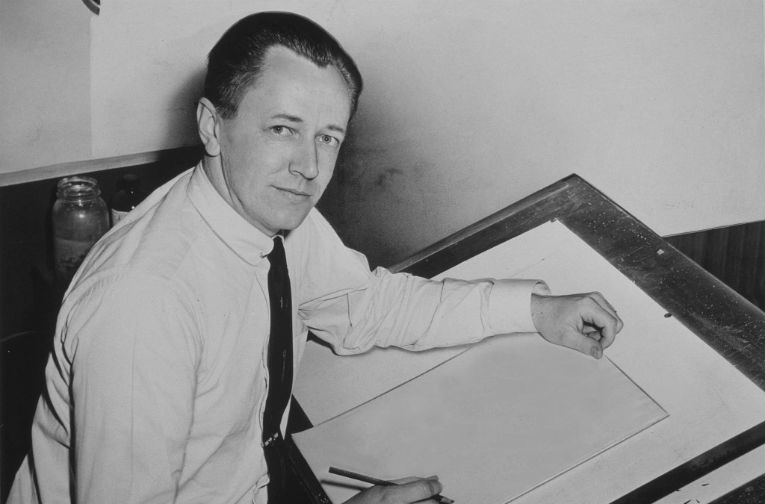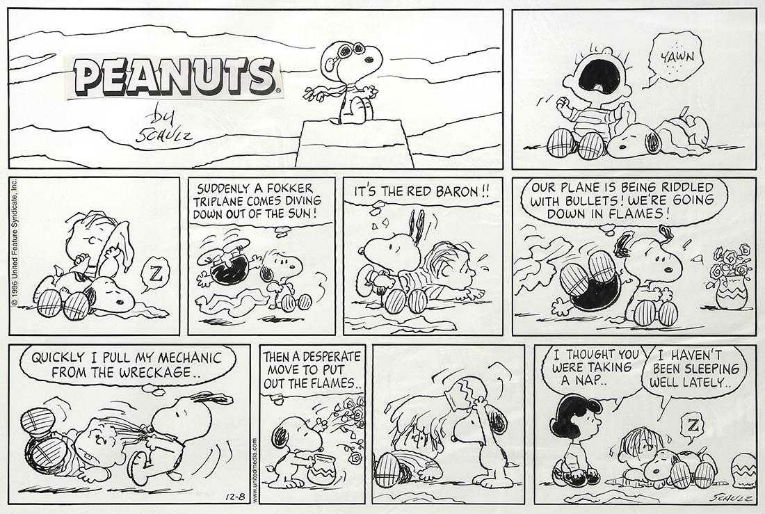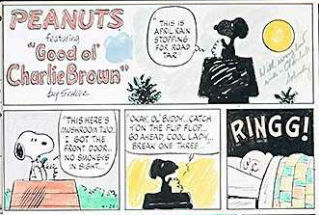
NEW YORK – When it comes to comic strips, none is as iconic or beloved as Peanuts, created by Charles “Sparky” Schulz over a half century. Schulz hand drew each and every panel of the famous strip, without help of assistants, since its first appearance on Oct. 2, 1950 to his retirement at age 77 in January 2000. Peanuts appeared in more than 2,500 newspapers in 75 countries in 25 languages.
Audiences fell in love with its charming cast of characters: fatalistic Charlie Brown; piano-playing Schroeder; the bold and sneaky Snoopy (whose imaginary exploits against the Red Baron are among many readers’ favorites); the acerbic Lucy and her blanket-swaddling brother, Linus; Pig-Pen and the cloud of dust that perpetually clung to him; the clueless Peppermint Patty and many more. The child-centric strip deliberately and famously never pictured adults (and in the classic television holiday specials like It’s the Great Pumpkin, Charlie Brown or A Charlie Brown Christmas, adults appear offscreen, with the trombone sounds of wah-wah-wah as a stand-in for an adult’s voice).

Though Peanuts centered on children, its messages and themes explored were universal and eminently relatable to adults as well as kids. Collectors pay top dollar today to acquire original Peanuts comic strip art, especially for strips showcasing Charlie Brown and Snoopy, such as the 1966 strip detailing a battle between Snoopy and the Red Baron that brought $85,000 in February 2010 at Heritage Auctions or the full-color Sunday comic strip from 1976 with Snoopy waking up neighbors by using his CB radio in the middle of the night, which brought $32,500 in January 2014 at Michaan’s Auctions.

We asked Benjamin L. Clark, curator for the Charles M. Schulz Museum and Research Center in Santa Rosa, Calif., to share some insights on the universality of Peanuts.
Auction Central News: What is it about Peanuts strips that are so appealing to collectors? What are some of the attributes of his best work?
Benjamin L. Clark: Peanuts is iconic. There was no comic strip like it when it debuted in 1950, and no strip was the same after. Charles Schulz was not only a sympathetic and keen observer but very funny. His line work is also amazing. The details and expressions he achieves with tiny strokes of the pen are a wonder. Even in his later, “wavy line” years, after developing a tremor following heart surgery, his line is poetic and evocative.

ACN: Can you tell our readers about some of the best or most interesting/rare themes of his Peanuts comic strips?
BC: Charles Schulz was a keen observer of human nature, distilling reflections on life’s big questions back to small moments of interaction. When Charlie Brown’s baseball team loses, readers nod knowing how it feels whether we’ve ever played baseball or not. Or when Charlie Brown nearly summons the courage to talk to the Little Red-Haired Girl, but can’t quite do it at the last moment, readers remember the things we’ve left unsaid and pile it onto our list of regrets. But Peanuts isn’t only about regret and failure, but also about the triumph of hope, imagination, and friendship. So, not only is it deeply touching and thought-provoking, but it’s also very funny, which is a rare combination.

ACN: What is it about Charlie Brown and his friends that strikes a chord and resonates with readers?
BC: Peanuts doesn’t shy away from questions like “What is the meaning of life?” and “What is happiness?” – deep questions of human existence. It’s also relatable because anyone reading it has experienced (or is experiencing) childhood, with its triumphs and catastrophes. These characters remind us of our friends, our sister, our brother and most of all, of ourselves. And published worldwide in 25 languages in 75 countries, it’s certainly not only an American phenomenon.

ACN: What kind of work/research is undertaken at the museum’s Research Center?
BC: The Research Center is the beating heart of daily, ongoing research into Charles Schulz’s life and creative work. It is where we maintain collections of Schulz’s personal and business correspondence, photographs, film and manuscript and published materials. We are able to examine Schulz’s life and work through these materials due to the hard work of dedicated staff making these collections available to me and museum staff.

ACN: How would you sum up or describe his legacy and influence on other cartoonists?
BC: Nearly every cartoonist who has come to the comics pages since 1950 will cite Schulz as an influence. Those that don’t just haven’t realized how much his style of drawing, his approach to storylines, and his sense of humor have shaped everything else since then.


